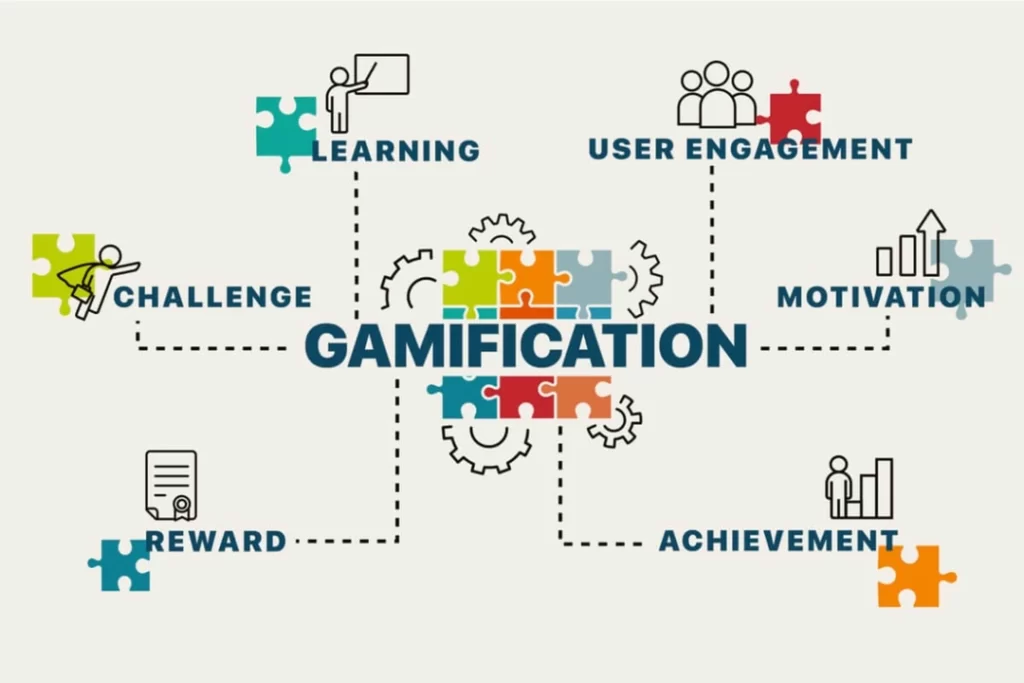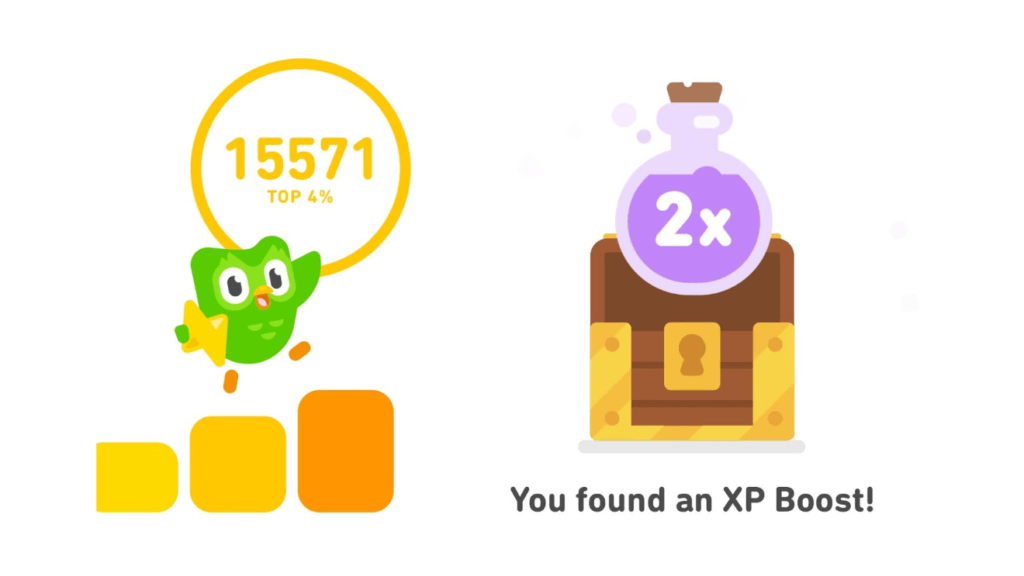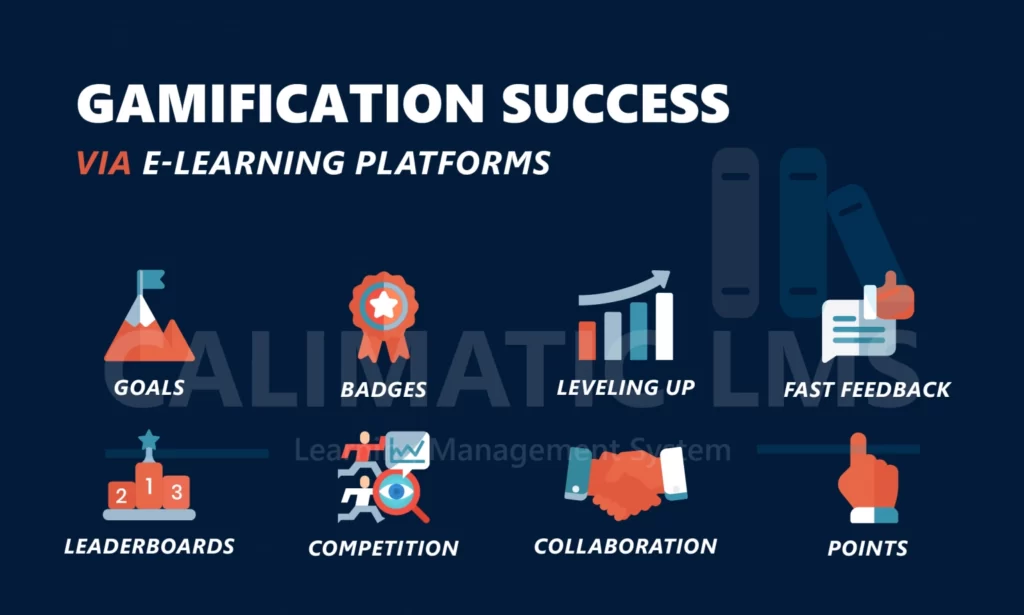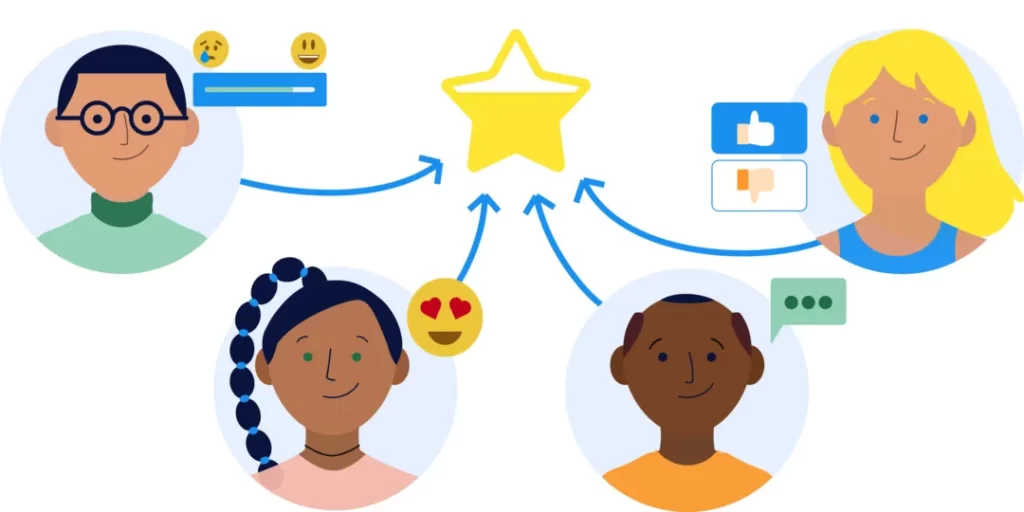Business Gamification: A Strategic Approach
Have you ever wondered how to turn the daily grind of running a business into a fun and engaging experience? Look no further because we're about to dive into the exciting world of business gamification!
In today's fast-paced and highly competitive marketplace, finding innovative ways to motivate employees, engage customers, and boost overall productivity has become a top priority for businesses of all sizes. And that's where gamification steps in, revolutionising how we approach work and achieving remarkable results.
Before we jump into the nitty-gritty details, let's take a quick look at some eye-opening statistics. According to a recent study by Gartner, by the end of 2023, 70% of Forbes Global 2000 organisations will have at least one gamified application in place. That's a staggering number, and it's not hard to see why so many companies are jumping on the gamification bandwagon.
But what exactly is business gamification, and why is it gaining so much traction? Simply put, it's the application of game design principles and mechanics in a non-game context, such as the workplace. By incorporating elements like competition, rewards, achievements, and leaderboards, businesses can tap into our innate human desire for challenges and recognition, driving engagement and fostering a more positive and productive work environment.
You might think, “Sure, it sounds fun, but is there any substance behind the hype?” Absolutely! Numerous studies have demonstrated the benefits of implementing gamification strategies in various business areas. For instance, a report by TalentLMS found that gamification can increase employee engagement by a whopping 48%. Imagine the impact that could have on your team's motivation and overall performance!

Moreover, gamification can do wonders for customer engagement and loyalty. According to a study by Badgeville, companies that implement gamified systems experience a 47% increase in customer engagement and a 36% boost in customer loyalty. These are not just numbers; they represent real opportunities for businesses to connect with their customers deeper and create brand advocates.
So, whether you're a startup looking to build a motivated workforce, an established company aiming to enhance customer loyalty, or an entrepreneur seeking creative ways to solve business challenges, business gamification holds tremendous potential for you. It's not just about playing games; it's about transforming your business strategy and reaping the rewards of increased engagement, productivity, and success.
In this blog series, we'll delve into the strategic aspects of business gamification, exploring practical tips, case studies, and expert insights to help you leverage this powerful tool effectively. We'll uncover the fundamental principles, discuss implementation strategies, and examine success stories from various industries, proving that gamification is more than a passing trend—it's a game-changer.
So, get ready to level up your business approach because the world of business gamification is waiting for you. Stay tuned for our next blog post to reveal the secret sauce behind a successful gamification strategy that can revolutionise your company. Trust us; you won't want to miss it!
Remember, in the game of business, the strategic approach always wins. Let's play to win together!
Table of Contents
Understanding Business Gamification

Let's start by defining what we mean by business gamification. It refers to applying game elements, such as challenges, achievements, and rewards, to business processes and activities. Gamification draws inspiration from game design principles, mechanics, and dynamics to create engaging experiences that motivate and incentivise participants.
The concept of gamification has evolved, gaining popularity as businesses recognise its potential to increase engagement and drive desired behaviours. Today, it encompasses a range of elements, including leaderboards, badges, levels, quests, and virtual currencies, all aimed at capturing attention, fostering participation, and rewarding desired actions.
Benefits of Business Gamification
So, why should businesses embrace gamification? Let's delve into the key benefits it offers:
1 – Employee Engagement and Motivation
Companies can significantly enhance employee engagement and motivation by introducing gamification. Gamified experiences create a sense of challenge, achievement, and progress, making tasks more enjoyable and rewarding. This, in turn, leads to increased productivity, job satisfaction, and a stronger sense of purpose among employees.
Furthermore, gamification can be an effective tool for learning and development initiatives. Employees become more actively involved by incorporating game-based elements into training programs, improving knowledge retention and skills acquisition. Gamification also encourages collaboration and teamwork, as employees compete against shared goals and strive to outperform one another.
2 – Customer Engagement and Loyalty
Business gamification extends beyond the organisation's walls and profoundly impacts customer engagement and loyalty. By gamifying the customer experience, companies can create immersive brand interactions that captivate and retain customers.
Gamification techniques, such as challenges, rewards, and social competition, encourage customers to participate, explore, and interact with a brand. This involvement builds a stronger emotional connection and fosters loyalty. Companies can also use gamification to gather valuable customer data, understand preferences, and personalise experiences, enhancing customer satisfaction.
3 – Data Collection and Analysis
One often overlooked benefit of business gamification is its ability to collect and analyse valuable data. As users engage with gamified experiences, businesses can gather insights into customer behaviour, preferences, and motivations. This data provides:
- A deeper understanding of customers.
- Enabling informed decision-making.
- Targeted marketing campaigns.
- More effective strategy formulation.
Moreover, gamification allows for real-time data tracking, providing immediate feedback on user engagement, performance, and areas for improvement. This iterative approach facilitates the continuous optimisation of gamification strategies and ensures the delivery of meaningful experiences to users.
Implementing Business Gamification
Implementing successful business gamification requires careful planning and execution. Let's explore the key steps involved:
1 – Identifying Business Objectives and Challenges

So, when it comes to gamification in business, the first step is setting the stage. Companies need to get crystal clear about their objectives and dig deep to identify the pain points they want to tackle through the power of gamification. Whether boosting employee productivity, fostering unwavering customer loyalty, or unearthing valuable data insights, it's vital to align gamification initiatives with the broader business strategy.
Picture this: you're a business owner wanting to implement gamification in your organisation. You've got to start by asking yourself some crucial questions. What do you hope to achieve? Are you aiming to amp up your team's efficiency and output? Or you're eager to create a more engaging experience for your customers and keep them returning for more. You're even itching to unlock those hidden data gems and gain valuable insights to drive your decision-making.
Whatever your objective, gamification can be a powerful tool to help you achieve it. But remember, it's not just about slapping a game-like feature onto your existing processes and hoping for the best. Oh no, it's much more strategic than that! You need to weave gamification into the very fabric of your business strategy, seamlessly integrating it to create a cohesive experience.
Think of it as a puzzle. You have your business goals and challenges on one side and the potential of gamification on the other. The key lies in finding the perfect fit between them. How can you leverage gamification principles to overcome and align those pain points with your strategy? That's the million-dollar question!
Take a moment to reflect on the specific areas where gamification can make a tangible impact. Is it motivating your employees to go above and beyond, transforming mundane tasks into exciting quests? Or is it about building a loyal army of customers who can't get enough of your brand thanks to your engaging gamified experiences? You may even be eyeing the goldmine of data within your operations, and you want to use gamification to extract those precious insights.
No matter your choice, the key is to be intentional. Design your gamification strategy to address those pain points head-on, ensuring seamless integration with your overall business objectives. This way, you'll be able to create a win-win situation where both your business and your audience reap the benefits.
2 – Designing Gamified Experiences

When creating captivating gamified experiences, understanding your target audience and what motivates them is crucial. It's like unlocking the secret to their hearts and minds! By delving into their desires and preferences, you can design game mechanics, rules, and progression that perfectly balance challenge and reward.
Imagine this: You're playing a game, and every step you take, every obstacle you overcome, brings you closer to a sense of accomplishment. That feeling is what keeps you engaged, right? The same principle applies when businesses want to drive engagement and motivation among their customers or users.
So, here's the trick: Aligning the elements of the game with the desired behaviours and outcomes is critical. By doing this, businesses can effectively influence their audience's actions and keep them returning for more. It's like a clever way of nudging people towards the behaviours you want to encourage.
Let's say a company wants to promote a healthy lifestyle. They could create a gamified app that rewards users for completing physical activities like walking or jogging. The game could have levels, achievements, and challenges to keep things exciting. By providing instant feedback and virtual rewards, the app reinforces the desired behaviour of staying active and motivates users to keep pushing themselves.
Businesses can tailor their gamified experiences to tap into those motivations by understanding what drives their target audience. It's all about creating a game that genuinely resonates with the players and makes them feel part of something bigger.
And you know what's great about this approach? It goes beyond mere entertainment. Gamified experiences can inspire positive change and transform mundane tasks into enjoyable adventures. It's like turning everyday activities into something exciting and rewarding.
So, next time you find yourself immersed in a game or using an app that keeps you hooked, think about the genius behind it. Behind the scenes, a team of designers understands their audience inside out, carefully crafting a gamified experience that strikes the perfect balance between challenge and reward. They play a game but manage engagement and motivation instead of collecting points.
3 – Integrating Technology and Platforms
When it comes to incorporating gamification into your business, finding the right software or tools is critical to ensuring smooth integration with your existing systems. It's like picking the perfect puzzle piece to complete the big picture! Whether you're targeting mobile users, web users, or even your employees on an enterprise level, it's important to select solutions that align perfectly with your specific needs and goals.
Imagine this: You have a fantastic gamification idea that will engage your customers, boost productivity among your employees, or enhance the overall user experience of your app or website. To bring that idea to life, you need the right tools to make it happen. You want the best tools to create a masterpiece like a skilled craftsman.
So, let's dive into the world of gamification software and tools. The first thing to consider is compatibility. You want to introduce something other than a new tool that clashes with your existing IT infrastructure, like oil and water. Instead, you want them to work together like a perfectly synchronised dance routine. Seamless integration is the name of the game here. You want your gamification software to seamlessly blend with your current systems, ensuring a hassle-free experience for you and your users.
Speaking of users, their experience should always be a top priority. When integrating gamification technology, you want to create an environment where your users can't help but get hooked and have a blast. Think of it as turning a mundane task into an exciting adventure or transforming a routine activity into a thrilling challenge. The software or tools you choose should provide a seamless user experience, enhancing engagement and encouraging participation.
Now, let's talk about platforms. Depending on your target audience and objectives, consider whether mobile, web, or enterprise platforms best fit your gamification strategy. Each forum has its unique advantages and potential user base. Mobile apps can tap into the growing number of smartphone users, web-based solutions can reach a wider audience across various devices, and enterprise platforms can create a gamification culture within your organisation.
4 – Communicating and Training

When it comes to gamification, it's crucial to have clear communication about your objectives, rules, and benefits. This ensures that participants fully understand the gamified experience and encourages them to engage. Think of it as setting the stage for an exciting adventure!
One effective way to facilitate this understanding is by providing tutorials and instructions. These handy guides act as maps, showing participants how to navigate the gamified environment and make the most of their experience. By offering step-by-step explanations and demonstrations, you can empower users to dive right in and start having fun.
But it doesn't stop there. To indeed keep participants engaged and motivated, it's crucial to establish continuous feedback channels. This means creating avenues for ongoing communication and interaction between users and the gamified system. Doing so creates a dynamic environment where participants can express their thoughts, ask questions, and receive guidance.
Feedback can come in various forms, such as leaderboards, progress indicators, or personalised messages. These elements give users a sense of accomplishment and constant reminders of the benefits they can gain from actively participating in the gamified experience. After all, who doesn't enjoy a little friendly competition or a pat on the back for a well-done job?
You're building a bridge between the users and the gamified world by combining clear communication, informative tutorials, and continuous feedback channels. This bridge fosters understanding, encourages exploration, and ultimately enhances the overall engagement and enjoyment of the experience.
Successful Case Studies

Let's take a look at a few successful case studies that highlight the power of business gamification:
Starbucks: My Starbucks Rewards
Starbucks implemented a gamified loyalty program called “My Starbucks Rewards.” Customers earn stars for each purchase, unlocking various levels and personalised rewards. This gamified experience has significantly increased customer engagement, leading to higher sales and the creation of brand advocates.
Duolingo: Language Learning Gamification
Duolingo, a popular language learning platform, has successfully gamified the process of acquiring new language skills. By incorporating levels, achievements, and a competitive leaderboard, Duolingo motivates users to practice and learn consistently. This gamified approach has resulted in higher engagement rates and improved learning outcomes.
Nike+: Gamifying Fitness and Sports
Nike+ utilises gamification to encourage users to track and reward their physical activities. By transforming exercise into a competitive and rewarding experience, Nike+ has fostered a community of active individuals. This gamification strategy promotes a healthier lifestyle and strengthens brand loyalty among fitness enthusiasts.
Challenges and Considerations
While the benefits of business gamification are evident, it's essential to address potential challenges and considerations:
1 – Designing Meaningful and Engaging Experiences
Superficial gamification elements without meaningful connections to business objectives can lead to disengagement and failure. Understanding user preferences and demographics is crucial to design experiences that resonate and drive desired behaviours.
2 – Ensuring Fairness and Avoiding Negative Consequences
Excessive competition or poorly designed reward systems can have unintended consequences, such as encouraging negative behaviours or bias. It's essential to balance and create a fair playing field to foster positive engagement.
3 – Measuring and Evaluating Success
Identifying relevant metrics and KPIs is essential to evaluate the effectiveness of gamification initiatives. Analysing data and deriving actionable insights help refine strategies, optimise user experiences and drive continuous improvement.
Future Trends and Opportunities
Looking ahead, several trends and opportunities are emerging in the field of business gamification:
1 – Virtual and Augmented Reality in Gamification
Advancements in virtual and augmented reality technologies open new possibilities for immersive gaming experiences. From virtual simulations for training purposes to enhancing skill development, these technologies offer exciting avenues for businesses to explore.
2 – Gamification in Healthcare and Wellness
Gamification has immense potential to promote healthy behaviours, patient education, and treatment adherence. Applying gamified elements to healthcare and wellness can make these processes more engaging, leading to better health outcomes.
3 – Gamification for Sustainability and Social Impact
Gamification can be a powerful tool to drive sustainability efforts and create social impact. By encouraging eco-friendly practices, raising awareness, and promoting collaborative problem-solving, gamified campaigns can mobilise individuals and communities for positive change.
Conclusion
Business gamification offers a strategic approach to engage and motivate employees, enhance customer experiences, and drive business growth. By leveraging game design principles, companies can tap into the innate human desire for competition, achievement, and rewards. However, successful implementation requires careful planning, thoughtful design, and ongoing evaluation.
As technology advances and user preferences evolve, businesses must adapt and innovate to leverage the full potential of gamification in the dynamic and competitive landscape of the future. By embracing business gamification, organisations can unlock new levels of productivity, creativity, and loyalty, creating a win-win scenario for the business and its stakeholders.
